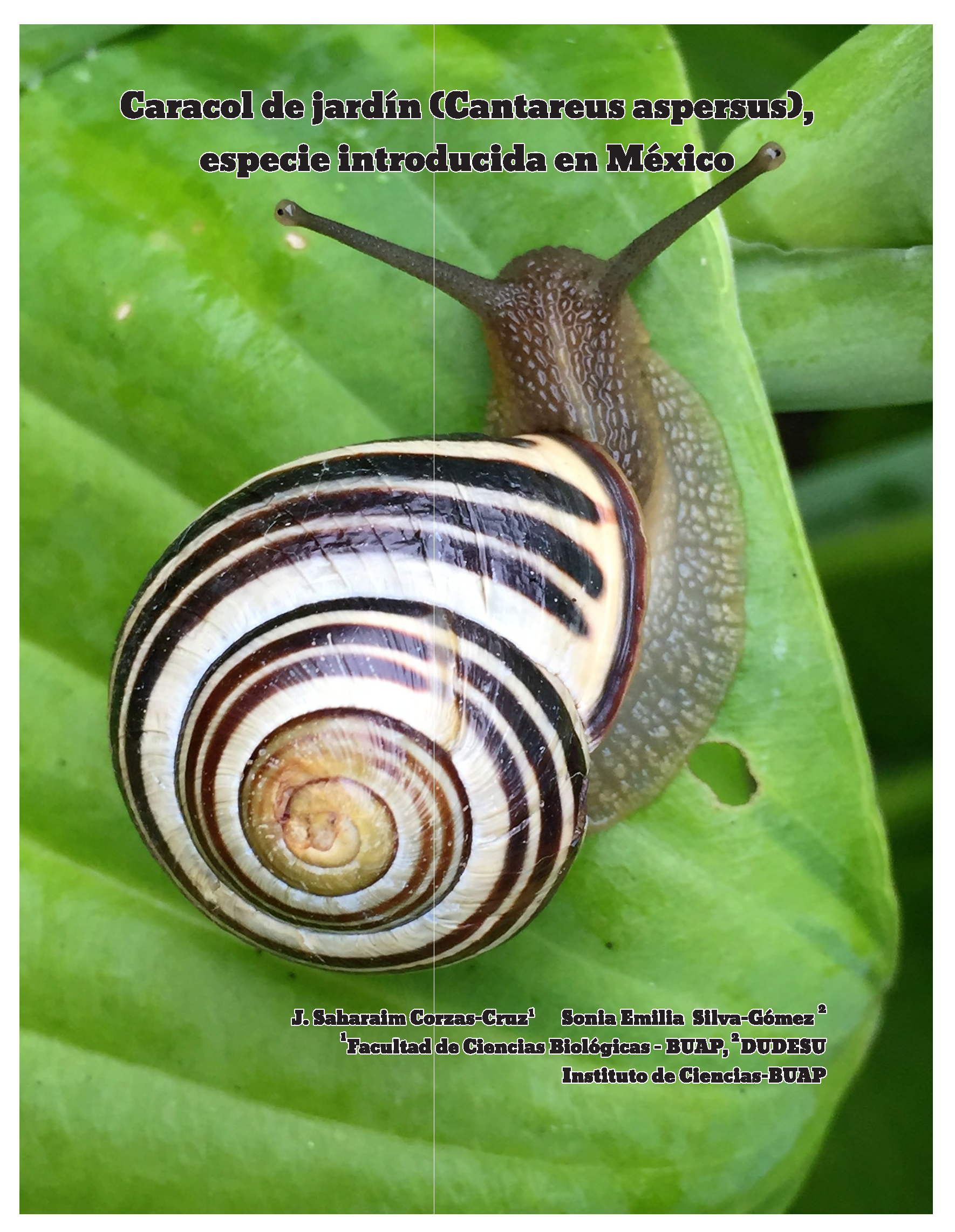Caracol de jardín (Cantareus aspersus), especie introducida en México.
Resumen
The brown garden snail (Cantareus aspersus), a species commonly found in gardens throughout the world, partakes in crop destruction and profit loss duet its highly invasive nature. Indirect factors, like international trade and the cultivation of new crops, have introduced C. aspersus to countries beyond its native locations. This article discusses the origin, distribution, and characteristics of the garden snail C. aspersus that made it possible to arrive to Mexico.
The climatic and topographical conditions that make Mexico a megadiverse country also predispose itas a country where these alien species have successfully settled down and proliferated. Nonetheless, the disregard towards these invasive organisms and the limited number of researchers pose a challenge in controlling this pest.
Descargas
Citas
Araiza-Gómez, V., Naranjo-García, E., y Zúñiga, G. The Exotic Slugs of the Genus Deroceras (Agriolimacidae) in Mexico: Morphological and Molecular Characterization, and New Data on Their Distribution. American Malacological. Recuperado en 2018 desde: http://www.bioone.org/doi/pdf/10.4003/006.035.0205. Bulletin, 35(2), pp. 126-133, 2017
Baker, F. The Geographical Distribution of Mollusca. Science, 2(33), pp. 179-183, 1895 Barker, M., Molluscs as crop pests. New York, USA., pp. 1-19, 2002.
Barker, G., y Watts, C., Management of the invasive alien snail Cantareus aspersus on conservation land. DOC Sciencelnternal Series 31,pp. 1-20, 2002
Barrientos, Z., Los moluscos terrestres (Mollusca: Gastropoda) de Costa Rica: clasificación, distribución y conservación. Revista de Biología Tropical, pp.1165-1175, 2010.
CABI. Datasheet report for Cornu aspersum (common garden snail). Datasheet report for Comu aspersum ( common garden snail). Recuperado en 2018 desde: https://www.cabi.org/isc/datasheetreport?dsid=26821, 2018
Córdoba, M., Predicción de Plagas de Gasterópodos Terrestres en Galicia. Tesis de Doctorado, p. 340, 2009.
Danzos, H., La agricultura orgamca como alternativa al uso de plaguicidas. El caso de Huatusco, Veracruz (Titulo Maestría). Universidad Iberoamericana, México, D.F., México, pp. 15-35, 2007.
Dekle, G., y Fasulo, T.,Brown Garden Snail, Helix aspersa Müller (Gastropoda: Pulmonata: Helicidae ). Recuperado en 2017, desde Institute of Aood and Agricultura! Sciences: http://edis.ifas.ufl.edu/in396, 2014
Díaz, J., Aguirre, J., Mejía, G., y Martínez, E., Reproducción genética del caracol terrestre Helix aspersa. Revista CES Medicina Veterinaria y Zootecnia, pp. 78-88, 2007.
Dreistadt, S., Integrated Pest Management For Citrus (Tercera ed.). (UC, y ANR, Eds.) California, p.199,2012.
Espinosa-García, F., Golubov, J., Koleff, P., y Mendoza, R.. Especies Invasoras de alto Impacto a la Biodiversidad: Prioridades en México. México: Instituto Mexicano de Tecnología del Agua, p. 9, 2007.
FAO-SAGARPA, México: el sector agropecuario ante el desafio del cambio climático. (Vol. 1). Recuperado 2017, desde: http://www.fao.org/3/abc943s.pdf,p. 1, 2012.






